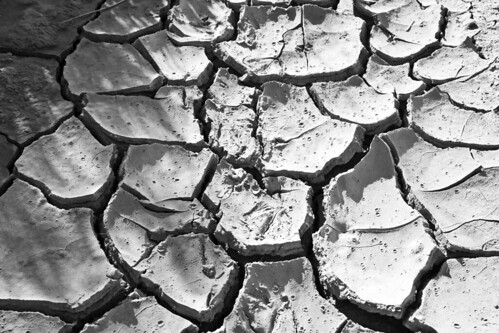

In times of drought, limitations on the water supply usually go into effect. These restrictions can be challenging to the gardener. Water conservation in the landscape is one way to help our natural resources last. Don't wait for restrictions on outdoor water use, or worse yet, an outright ban. You can begin now to assess and improve your garden so that it becomes far more "water thrifty".
To conduct a site inventory and analysis with water conservation in mind, determine which plants have a high water demand. Learn the prevailing wind directions, patterns of sun and shade, existing topography and soil type on a site in order to improve growing conditions. Assess the condition and placement of your plants; do they conform to the principles of water use zones outlined below? Also, note existing large expanses of lawn and determine ways to minimize these areas to some extent if possible.
A well-designed, water-conserving landscape is organized into three water-use zones: high, moderate and low. If water-demanding plants are spread throughout the garden, regroup them together close to the water source. The high-use zone should comprise the smallest area, such as a planting near the front of the home, where ornamentals are easily visible and near the water source. The largest numbers of plantings should be in the low water-use zone, where established plants need no supplemental irrigation. Drought-tolerant turf grasses, woody ornamentals and native or naturalized plants fit into this category. Moderate-use zones would include plants that need to be watered as they show signs of drought stress.
Environmentally sound landscape techniques include planting for energy conservation and micro-climate improvement. For example, a house with southern exposure will benefit from the strategic placement of deciduous shade trees along the southwest corner. This lowers the amount of heat and glare received on summer afternoons. Existing micro-climates may be utilized to establish particular types of plantings; a garden in the shade is almost 20 degrees cooler than one in the sun. An area that receives sun only in the early morning will tend to dry out less, as the overall transpiration losses will be lower.
Saving rainwater is a simple, water-wise idea. Connect downspouts from roof gutters to a plastic rain barrel equipped with a tap to save every precious drop of rainfall. The rain barrel will come with a top filtering screen to keep out leaves, twigs and very importantly mosquito larvae, which breed in standing water. Try to utilize this water as soon as possible to avoid larval breeding. To easily water your garden, attach a hand-held hose with a shut-off nozzle to the barrel's tap.
Traditional sprinklers require high water pressure and waste almost 25 to 30% water due to evaporation and wind effect. Most existing water-wasteful systems can be refitted with low-flow components to deliver water precisely where it is needed - to the root area. With systems such as point/source drip, micro irrigation, drip line and soaker hoses, less water is wasted, moisture and nutrient uptake is maximized and soil-borne diseases can be reduced as leaf surfaces are kept dry.
Designing for drought will help keep our green investments and natural landscapes alive. While some plant species are more xerophytic (better equipped to withstand dehydration) than most, others resist drought by slowing down the growth process. Oak, black locust, ginkgo, callery pear, Kentucky coffee tree and honey locust will slow growth considerably under drought conditions. Certain other trees, such as Katsura tree, shadblow, birch, moutain ash, yellowwood and flowering dogwood, have little drought tolerance.

 Plants for Dry Climates
by
Plants for Dry Climates
by